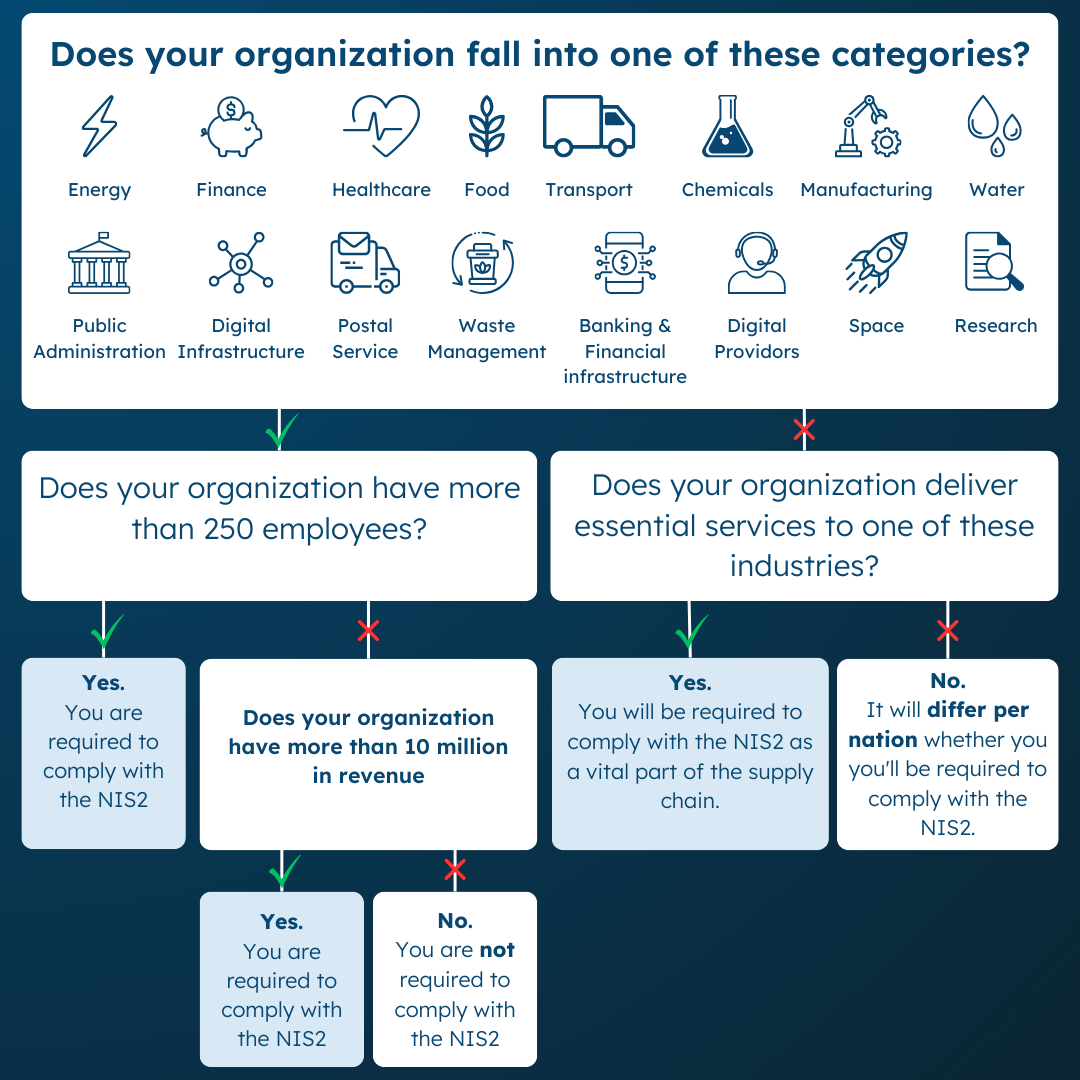Blog
Understanding NIS2 and Its Importance for Businesses in Europe
In today’s digital age, cybersecurity is more crucial than ever. As cyber threats grow more sophisticated, the European Union has introduced NIS2, a directive designed to bolster the cybersecurity resilience of essential sectors.
NIS2, short for Network Information Security 2, imposes stricter cybersecurity and compliance requirements on critical industries across the EU. Understanding NIS2 is vital for organizations, especially as it creates new opportunities and challenges in cybersecurity.
What is NIS2?
NIS2 is a revised version of the original NIS Directive, which came into effect in 2016. The updated NIS2 Directive aims to address the evolving landscape of cyber threats by extending the scope to include more sectors and enhancing existing security measures.
The focus is on essential and important organizations in sectors like energy, transport, healthcare, and finance. These sectors are considered critical to the functioning of society and the economy, making them prime targets for cyberattacks.
The key goal of NIS2 is to strengthen the digital resilience of these industries across Europe by setting mandatory cybersecurity standards. This will help ensure that digital systems remain operational even in the face of rising cyber threats.
Why is NIS2 Relevant?
NIS2 is highly relevant to any organization involved in critical infrastructure or providing essential services. With cybersecurity threats growing and becoming more professional, the risk to digital systems in sectors such as healthcare, transportation, and energy is higher than ever. Additionally, the rise of cybercrime and geopolitical instability further intensifies these risks.
The directive requires organizations to implement robust security measures, such as encryption, multi-factor authentication, and secure communication protocols. Moreover, NIS2 emphasizes the importance of securing supply chains, meaning that the security of third-party vendors and partners is now just as critical as the security within the organization itself.
With personal liability for non-compliance now falling on organizational leaders, the pressure is on businesses to implement effective cybersecurity measures. Organizations that fail to comply with NIS2 may face severe penalties, similar to the GDPR.
For essential organizations: A minimum of 10 million or 2% of global annual turnover.
For important organizations: A minimum of 7 million or 1.4% of global annual turnover.
Key Compliance Actions for Organizations
To meet NIS2’s rigorous requirements, businesses must take several critical actions. Here are some of the key compliance steps:
- Implement Advanced Security Measures: Organizations must put in place robust cybersecurity strategies, including encryption and multi-factor authentication. These are essential to protect sensitive data and critical systems from unauthorized access.
- Incident Reporting: NIS2 mandates that organizations report cyber incidents quickly—within a specific timeframe. Having automated reporting features in place is crucial for meeting this requirement.
- Supply Chain Security: As part of the NIS2 framework, businesses need to secure not only their internal networks but also their entire supply chain. This requires assessing and ensuring that third-party vendors comply with similar security standards.
- Develop Incident Response Plans: Organizations should establish clear incident response protocols that can be swiftly activated in the event of a security breach. This includes preparing detailed reports and ensuring business continuity.
- Regular Risk Assessments: Continuous risk assessments are crucial for staying ahead of emerging threats. Evaluating vulnerabilities and updating security protocols should be an ongoing process.
- Employee Training: Staff must be educated on cybersecurity best practices and how to recognize and respond to potential threats. Regular training ensures that employees contribute to the overall cybersecurity posture.
Timeline for Implementation
The European Commission stated that the NIS2 must be transposed into national law by October 2024. Actual timelines for transposing NIS2 into national law vary per nation. Organizations affected by the NIS2 Directive will need to comply with these regulations once they are fully enforced. It’s important to start preparing now, as many organizations are already working on ensuring compliance with NIS2 requirements.
Personal Accountability for Executives
A significant change in NIS2 is that executive leaders are now personally liable for ensuring compliance within their organizations. This means that CEOs, CIOs, and other decision-makers must take a hands-on approach to cybersecurity and compliance. The penalties for non-compliance are severe, so it’s crucial for leadership to ensure the implementation of necessary security measures and proper reporting protocols.
Conclusion
The NIS2 Directive is set to significantly change the way organizations across Europe approach cybersecurity and compliance. By strengthening security requirements for critical sectors and emphasizing the need for proactive security measures, NIS2 is pushing organizations to take digital resilience seriously.
For businesses operating in essential sectors, the time to act is now to ensure compliance and avoid the risk of hefty fines.
At AmeXio, we understand the complexities of NIS2 compliance and how it affects your operations. Our robust ECM solutions are designed to help organizations implement necessary security measures, automate compliance workflows, and ensure that your digital infrastructure is secure and resilient.
With the right tools and expertise, AmeXio can help you navigate the challenges of NIS2 and build a compliant, future-proof organization. Let us guide you in strengthening your cybersecurity posture and staying ahead of evolving threats.
Get into contact for a free consultation about NIS2.
